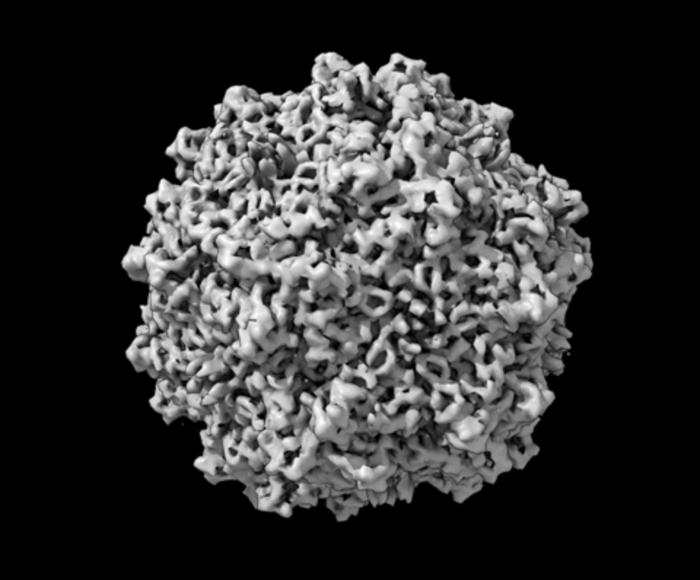
In a landmark study that holds significant implications for the field of gene therapy, researchers have conducted an exhaustive evaluation of widely-used measurement techniques employed in the quantification of adeno-associated viruses (AAVs). These viruses are crucial in the delivery of therapeutic genetic material, allowing for innovative treatments targeting the root causes of genetic disorders and diseases. However, the study has called into question the reliability of one of the most prevalent measurement methods, determining it to be “problematic” and in need of comprehensive refinement and standardization.
Gene therapy stands as one of the most revolutionary advancements in modern medicine, showcasing an ability to modify or replace defective genes to effectively treat or prevent a series of potentially debilitating diseases. Currently, there are approximately two dozen therapeutic products in the marketplace, and hundreds of clinical trials are either ongoing or slated for the near future. As this field rapidly expands, accurate measurement of AAV vectors becomes paramount to ensuring both the safety and efficacy of these groundbreaking treatments.
AAVs have gained recognition for their utility in gene therapy, since they can be precisely engineered to deliver therapeutic genetic entities into targeted cells. In this process, the harmful viral genetic material is substituted with a therapeutic payload that aims to correct genetic deficiencies or express beneficial traits. The administration of these tailored AAVs to patients, however, necessitates a reliable evaluation of their concentration and efficacy, which hinges on assessing the viral vector’s genetic material and viral particles accurately.
The recently published study, which was a collaborative effort involving the National Institute of Standards and Technology, the National Institute for Innovation in Manufacturing Biopharmaceuticals, and the U.S. Pharmacopeia, sought to explore the reliability of four measurement methods utilized in the quantification of AAV vectors. Six industry laboratories across the United States and Europe participated in this ambitious endeavor, utilizing their platforms to measure the sample AAV vectors and returning their data for analysis.
Among the established methodologies evaluated, the polymerase chain reaction-enzyme-linked immunosorbent assay (PCR-ELISA) emerged as the least accurate and precise technique. Accuracy, in this context, refers to how closely a measurement aligns with the true value, while precision relates to the consistency of results produced by the method. Alarmingly, the lack of reproducibility exhibited by PCR-ELISA casts doubt on its reliability for quantifying AAV vectors, as indicated by the study’s findings.
The dual-nature of PCR-ELISA, combining the quantitative strengths of PCR with the protein measurement capabilities of ELISA, complicates the interpretation of results. Despite both techniques being established in the field for decades, variations in the way they are manufactured and applied can lead to discrepancies in performance. This situation is akin to baking a cake; while the same ingredients can yield different results due to varying cooking methods and tools, the PCR-ELISA suffers from similar inconsistencies.
Following its dismal performance in the study, the authors urge against the use of PCR-ELISA for quantitative AAV vector measurements without significant additional method development and subsequent harmonization. The implications of such findings are critical, as many ongoing and future gene therapy trials rely on data potentially skewed by the weaknesses present in the PCR-ELISA method.
In stark contrast, the study identified size exclusion chromatography coupled with multi-angle light scattering (SEC-MALS) as the most accurate and precise measurement technique of those tested. SEC-MALS demonstrated superior performance, suggesting it could be universally implemented for routine measurements of AAV vectors. It established a new benchmark for accuracy in this vital area of gene therapy measurement.
Interestingly, the sedimentation velocity analytical ultracentrifugation (SV-AUC) method, often regarded as the “gold standard” for AAV quantification, yielded results that were less precise than SEC-MALS. This outcome surprised researchers who had previously relied on SV-AUC for its reputed superiority. Nonetheless, SV-AUC exhibited enhanced capabilities for providing a comprehensive map of the genetic and viral particles, displaying its utility despite a variance in accuracy compared to SEC-MALS.
The study also examined A260/A280 ultraviolet spectrophotometry, which measures absorption characteristics of a sample. Researchers noted significant limitations for this technique in the context of AAV measurement, primarily due to its inability to differentiate between filled and underfilled AAVs. Furthermore, the large size of AAV protein particles compromises the spectrophotometry’s reliability, making it an unsuitable choice for critical, high-stakes measurements.
Significantly, the researchers did not draw conclusions regarding the potential impact this study might have on ongoing or planned gene therapy research that has relied on these measurement methodologies. The absence of recommendations for policy or regulatory changes adds another layer of complexity to the discourse surrounding gene therapy measurement techniques.
The collaborative team from NIST, USP, and NIIMBL is contemplating the formulation of standard operating procedures (SOPs) for the SV-AUC method. These SOPs, which delineate meticulous instructions for specific technologies or methodologies, could facilitate standardization that significantly uplifts reproducibility and reliability across labs. Achieving this goal would mirror the successful implementation of SOPs already established for SEC-MALS, fostering a universal standard in AAV vector quantification.
As with any complex analytical approach, understanding the inherent limitations and uncertainties associated with each measurement technique is imperative. Researchers encourage the community to be discernible when interpreting results derived from various methodologies, emphasizing that awareness of a technique’s capabilities and constraints is vital to sound scientific practice.
In summary, this pivotal study reveals the necessity for rigorous scrutiny in the measurement methodologies associated with gene therapy, aligning the industry towards adopting more reliable tools that ensure the integrity of therapeutic applications. The future of gene therapy relies not only on innovative treatment developments but also on the assurance that these treatments are powered by dependable and consistent measurement protocols.
Subject of Research: Cells
Article Title: Interlaboratory Measurement of Adeno-Associated Virus: Comparative Quantification of Full and Empty Capsids
News Publication Date: 26-Dec-2024
Web References: 10.1089/hum.2024.124
References: N/A
Image Credits: Thomas Cleveland (NIST)
Keywords
Cell therapies, gene therapy, adeno-associated virus, measurement techniques, accuracy and precision, polymerase chain reaction, sedimentation velocity.





